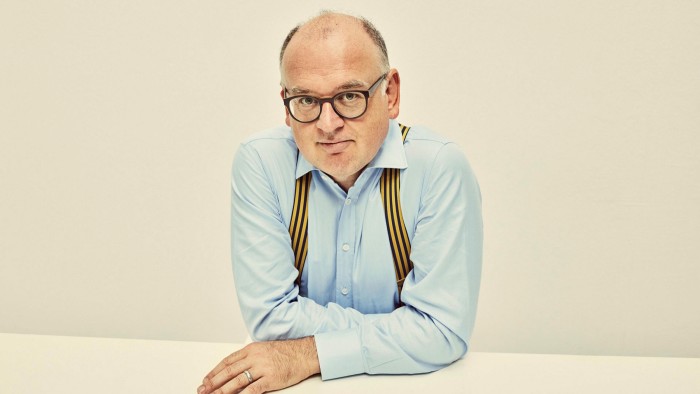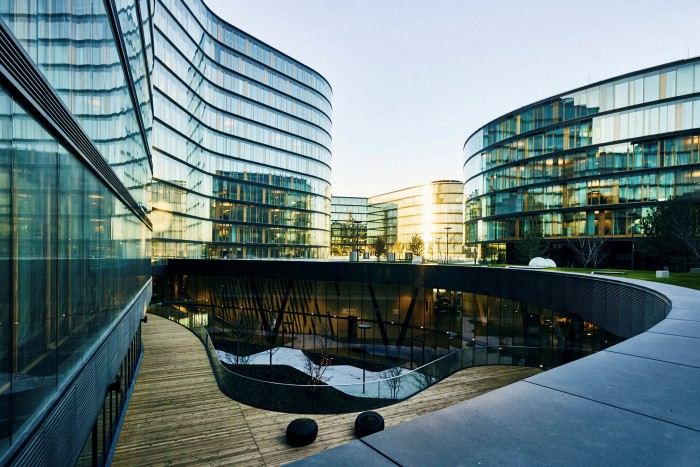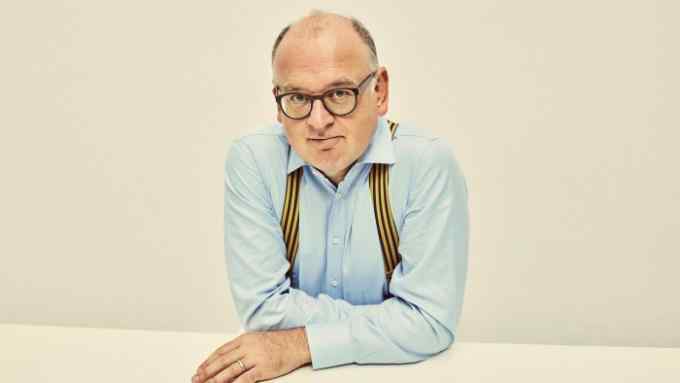Erste Group CEO: ‘We went into this crisis from a position of strength’

Roula Khalaf, Editor of the FT, selects her favourite stories in this weekly newsletter.
Central and eastern Europe economies will outpace their wealthier western counterparts in the post-pandemic recovery, according to the head of Austria’s largest bank, who believes they will benefit from strong economic fundamentals and better government decision-making.
“The economy has rebounded very strongly all over our region,” says Bernd Spalt, chief executive of Erste Group, one of central and eastern Europe’s biggest lenders. “We are back in a situation where we have almost full employment, full order books for the corporates, and consumption has returned.”
Insolvencies are at record lows and credit demand is rising, Spalt adds. It is a picture he does not see elsewhere in Europe: “Everyone has built their own little ringfence around their country.”
Central and eastern Europe economies are very likely to do better, he argues, partly because of extensive government support for sectors hit hard by Covid, such as tourism. In Austria, 80 per cent of the sector’s revenues were subsidised by the government.
The region’s underlying economic skew towards industry and manufacturing, which have largely continued during the pandemic, will also give it an advantage over more developed western economies, which are dominated by service-oriented businesses.
“The desire of people and corporates to get back to a normal state of affairs here is huge,” Spalt explains. Less stringent lockdowns also mean economic life in the region has not been as painfully affected as in the west.
Erste has now revised its earlier 2021 gross domestic product growth forecast of 4.5 per cent up to 7 per cent.
Speaking from Erste’s headquarters in Vienna, between the city’s main train station and the 18th century Belvedere Palace — famed for its collection of Klimt paintings — Spalt says the bank is forecasting significant revenue growth.
The flashiness of the Erste Campus, as it is known — a hub of sinuous low-rise glass office blocks, intersected by a public piazza — may finally be in keeping with the bank’s potential. The project for the headquarters was conceived in 2007, when the breakneck expansion of Austrian banks into eastern Europe suggested a glittering future for Vienna as an eastern European financial counterpart to Frankfurt or London.
It soon became a symbol of hubris. The financial crisis hit Erste hard. In 2008, the Austrian government took a €2.7bn stake in the bank to stabilise its balance sheet. Erste continued to rack up huge losses in the years that followed, as the aftershocks of the crisis rippled through the eurozone.

The 53-year-old Spalt — a life-long Erste Group employee and lawyer by training — took over as leader of the company in January last year. He succeeded Andreas Treichl, who had held the post for more than two decades.
As the pandemic took hold within months of his appointment, Spalt began to provision for “massive” losses and to shore up Erste’s balance sheet.
But it became clear relatively early on that liquidity would not dry up and that central and eastern Europe was positioned to weather the crisis economically.
Beginning in the late 1990s, Erste began an aggressive expansion in eastern Europe. The bank — including its subsidiaries — is the largest lender in several key economies in the region, including in the Czech Republic, Slovakia and Romania. It has more than 2,200 branches in total, with a balance sheet of just over €303bn.
What was a curse in 2008, as lenders and markets fearful of eastern European exposure withdrew liquidity, is now a significant benefit.
In its first-half results reported at the end of July, revenues at the bank were up 9.2 per cent year-on-year to €3.8bn, and net profit was €918m, up 212 per cent. The bank’s shares were almost 40 per cent higher at the end of August than at the start of the year.
“We went into this crisis from a position of strength,” Spalt says. “This wasn’t a financial crisis which turned into an economic crisis [like 2008], but a health crisis that turned into an economic crisis. And, from the first moment, banks were identified not as a part of the problem but the solution.”
There are clouds on the horizon, however, he stresses.
The rate of vaccine hesitancy in eastern Europe concerns him. “Maybe it's a little early to declare victory,” he says. “Everyone says there will be no more further lockdowns, but my fear still is that we are going into the second half of this year much too naive, just like last year, and missing out on what we need to prepare for.”
Economically, rising inflation is also a worry — specifically, that it will not be acted on fast enough by the European Central Bank.
Central and eastern Europe is already seeing rapidly rising costs. “If you have inflation but not interest rate hikes, that is not positive,” says Spalt.
“The ECB, of course, [has] access to experts and [economic] knowhow but, still, I think we need to have more attention to inflation and more understanding of how fundamental drivers of it will change over time,” he says.
“I am more sceptical [about writing off inflation risks] . . . the temporary nature of inflation now might quickly turn into something more permanent.”

Comments